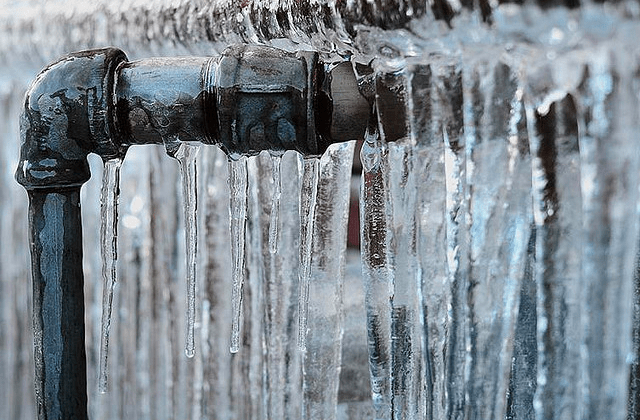Safeguarding Your Pipes from Cold Weather Damage: Key Approaches
Safeguarding Your Pipes from Cold Weather Damage: Key Approaches
Blog Article
They are making a number of good observations regarding Winter Plumbing Precautions: Preventing Frozen Pipes overall in the article down the page.

Cold weather can damage your pipes, particularly by freezing pipes. Right here's exactly how to prevent it from occurring and what to do if it does.
Intro
As temperature levels drop, the danger of icy pipelines rises, possibly causing costly repair services and water damages. Recognizing exactly how to stop icy pipes is important for homeowners in cool climates.
Recognizing Frozen Pipelines
What creates pipelines to ice up?
Pipes freeze when exposed to temperatures listed below 32 ° F (0 ° C) for prolonged durations. As water inside the pipes ices up, it increases, putting pressure on the pipeline wall surfaces and possibly causing them to break.
Risks and problems
Icy pipelines can bring about water supply interruptions, residential property damage, and pricey fixings. Ruptured pipes can flood homes and cause comprehensive architectural damages.
Indications of Frozen Piping
Identifying icy pipes early can avoid them from bursting.
How to identify frozen pipelines
Try to find decreased water circulation from taps, unusual smells or sounds from pipelines, and noticeable frost on revealed pipes.
Prevention Tips
Shielding prone pipes
Wrap pipelines in insulation sleeves or make use of heat tape to safeguard them from freezing temperature levels. Concentrate on pipelines in unheated or outside locations of the home.
Home heating strategies
Maintain indoor rooms sufficiently heated up, particularly areas with pipes. Open up closet doors to enable warm air to circulate around pipelines under sinks.
Shielding Exterior Plumbing
Garden tubes and outside faucets
Separate and drain yard pipes before winter months. Set up frost-proof spigots or cover outside faucets with protected caps.
What to Do If Your Pipes Freeze
Immediate activities to take
If you suspect icy pipes, keep taps available to relieve stress as the ice thaws. Use a hairdryer or towels taken in warm water to thaw pipes gradually.
Long-Term Solutions
Architectural modifications
Take into consideration rerouting pipes away from exterior wall surfaces or unheated locations. Include extra insulation to attics, cellars, and crawl spaces.
Updating insulation
Buy top quality insulation for pipes, attics, and walls. Proper insulation helps keep regular temperature levels and minimizes the danger of frozen pipes.
Conclusion
Avoiding frozen pipelines needs positive measures and fast actions. By comprehending the causes, indicators, and safety nets, property owners can protect their plumbing throughout winter.
5 Ways to Prevent Frozen Pipes
Drain Outdoor Faucets and Disconnect Hoses
First, close the shut-off valve that controls the flow of water in the pipe to your outdoor faucet. Then, head outside to disconnect and drain your hose and open the outdoor faucet to allow the water to completely drain out of the line. Turn off the faucet when done. Finally, head back to the shut-off valve and drain the remaining water inside the pipe into a bucket or container. Additionally, if you have a home irrigation system, you should consider hiring an expert to clear the system of water each year.
Insulate Pipes
One of the best and most cost-effective methods for preventing frozen water pipes is to wrap your pipes with insulation. This is especially important for areas in your home that aren’t exposed to heat, such as an attic. We suggest using foam sleeves, which can typically be found at your local hardware store.
Keep Heat Running at 65
Your pipes are located inside your walls, and the temperature there is much colder than the rest of the house. To prevent your pipes from freezing, The Insurance Information Institute suggests that you keep your home heated to at least 65 degrees, even when traveling. You may want to invest in smart devices that can keep an eye on the temperature in your home while you’re away.
Leave Water Dripping
Moving water — even a small trickle — can prevent ice from forming inside your pipes. When freezing temps are imminent, start a drip of water from all faucets that serve exposed pipes. Leaving a few faucets running will also help relieve pressure inside the pipes and help prevent a rupture if the water inside freezes.
Open Cupboard Doors
Warm your kitchen and bathroom pipes by opening cupboards and vanities. You should also leave your interior doors ajar to help warm air circulate evenly throughout your home.

As a keen reader on 6 Ways to Prevent Frozen Pipes, I think sharing that excerpt was worthwhile. For those who liked our blog entry plz be sure to share it. I take joy in reading our article about How to Prevent Your Pipes From Freezing.
Get A Free Quote Report this page